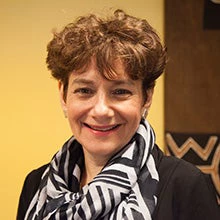COVID-19 is having a severe economic impact on local economies and communities. Overall, this crisis could push millions of people into extreme poverty and food insecurity, while millions of existing poor experience even deeper deprivation. Based upon initial World Bank baseline projections, 73 million more people could be living in extreme poverty in 2020 than was forecast before the crisis. Importantly, extreme poverty is likely to persist at higher levels in 2021 and potentially beyond. The pandemic has disrupted supply chains and has led to reverse migration, stagnant rural non-farm economies, and devastating consequences for community groups, youth, and informal workers.
The pandemic has created significant risks for the most vulnerable, including women, youth and informal workers. Women often rely on tenuous forms of employment and are more likely to experience income and job loss. Under normal circumstances, women carry much more of the care-giver burden. Now, women also need to care for children displaced from school and face a heightened risk of gender-based violence, resulting from stay-at-home orders. This crisis has also jeopardized the employment of millions of vulnerable youth and workers in the informal sector. Among the most impacted are those who may have lost their main source of income; often small roadside stalls or markets. The economic vulnerability exposed by COVID-19 calls for a more resilient economy and local economic development is a critical cornerstone of this.
Supporting Vulnerable Groups
In response to COVID-19, the World Bank has leveraged many of its community-driven development (CDD) and livelihood projects. This work has focused on providing income support to both the existing and new poor, small and micro enterprises, and informal sector workers in addition to ensuring food security and essential services. For example, India is leveraging women’s self-help groups (SHGs) through the World Bank supported National Rural Livelihoods Mission for the production of masks and hand sanitizer, dissemination of vital public health information, and preparation of food for distribution in community kitchens. In the Horn of Africa, Uganda, Djibouti, Kenya, and Ethiopia are also leveraging community based livelihood groups comprised mostly of women through the World Bank’s Development Response to Displacement Impacts Projects (DRDIP). These governments are increasing funding to support livestock trading, cage fish farming, and grinding mills for women and youth. While initial efforts have rightly focused on mitigating immediate impacts, there is now a need to focus on comprehensive support to transform local economies during and after COVID-19 for longer-term economic recovery and resilience.
Toward a Sustainable and Inclusive Recovery
Transforming local economies in the COVID and post-COVID world involves engaging in multiple ways to promote local economic development (LED). The LED approach in the rural context can have three focus areas: a territorial focus to capitalize on the strengths of a specific region or area, linking poor people to value chains with potential, and investments that promote the local business environment with improvements in internet access, electricity, and core infrastructure. Supporting inclusive local economic development, especially for the vulnerable and marginalized groups, requires a robust CDD approach with communities at the core of the process and an LED approach with critical stakeholders, including governments and public, business, financial institutions, and non-governmental sector working collectively to create better conditions and an enabling ecosystem for income generation and job creation.
Local economic development is the most critical determinant to improve the quality of economic growth both in terms of offering inclusion as well as resilience and sustainability. By focusing on investing in LED ecosystems, we can ensure longer-term local economic recovery. Such approaches entail investing in improving the quality of the community investment climate, linking community institutions to value chains, investing in productive infrastructure, supporting financial institutions, and developing public-private partnerships. Improving access to digital technologies can also provide a huge boost to the business environment and livelihoods, as well as improving access to education, health and leadership training. For example, digital technologies can hasten economic growth by linking buyers with private sector investors through online marketplaces or improving access to financial services. A joint research initiative between the World Bank and Alibaba Group, one of the world’s largest retailer and e-commerce companies, finds that e-commerce is associated with increased growth, income, and employment in rural communities in China.
Local economic development in a post-COVID context requires fresh, bold ideas to support women, youth, informal sector workers and micro and small enterprises on a more sustainable basis. In view of this, the CDD Global Solutions Groups (GSG); Rural Livelihoods and Agriculture Employment GSG, and Solutions for Youth Employment (S4YE) at the Bank are jointly hosting a compelling LED series . It is important to crowdsource and harness the tremendous knowledge and experience that is out there and try to learn together through this series. Over the coming months, we will engage with thought leaders, policy makers and practitioners to explore pathways for transforming local economies and communities for resilient and sustainable recovery. We hope you can join the dialogue to move toward a more resilient and prosperous future!
RELATED
The World Bank Group and COVID-19
Event: Local Economic Development Series: Inclusive and Sustainable Recovery




Join the Conversation